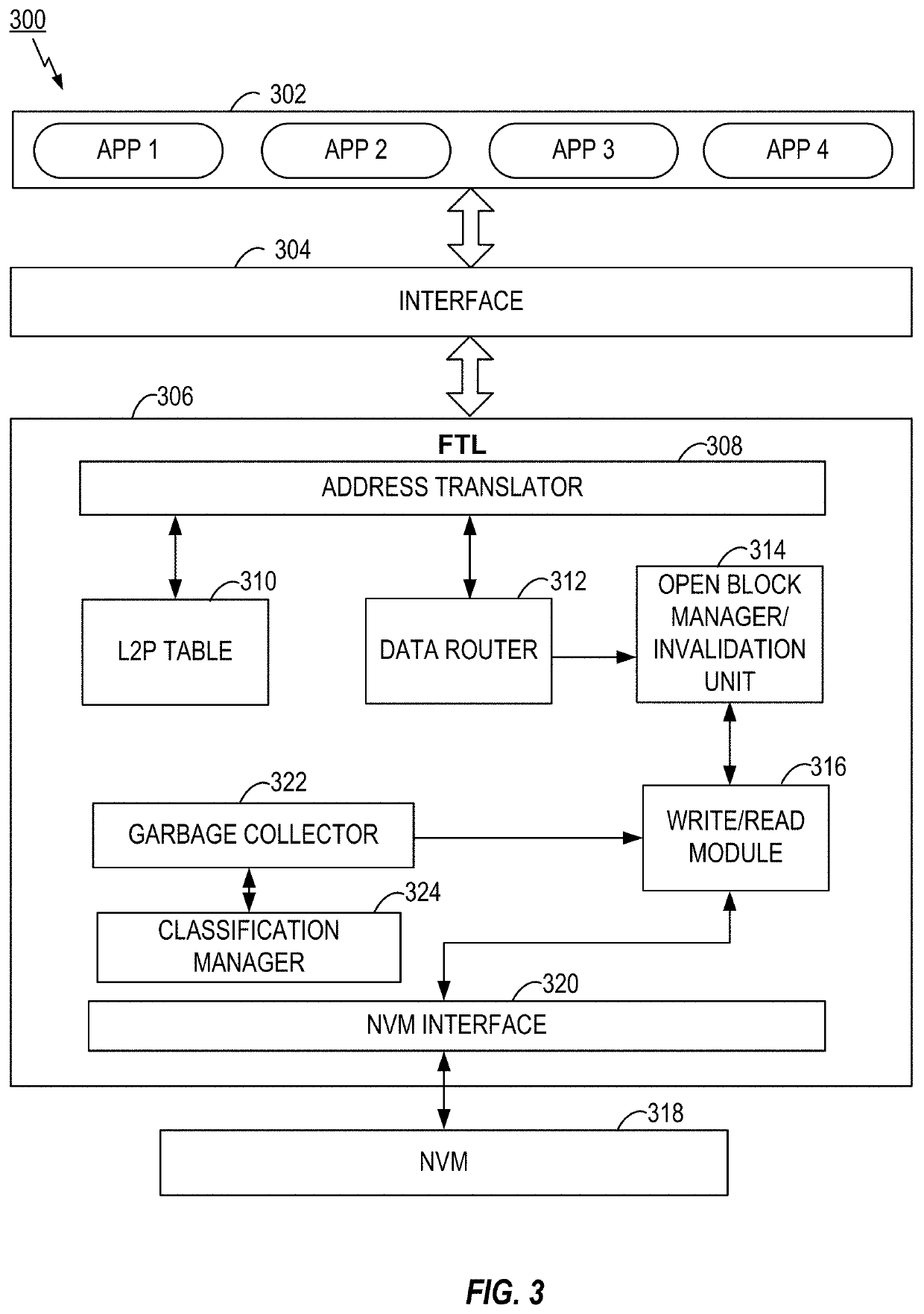Recency based victim block selection for garbage collection in a solid state device (SSD)
a solid state device and victim block technology, applied in the field of data storage devices, can solve the problems of invalidated previous data, inability to select source or victim block based on host data pattern, and may not be optimal for selecting source or victim block
- Summary
- Abstract
- Description
- Claims
- Application Information
AI Technical Summary
Benefits of technology
Problems solved by technology
Method used
Image
Examples
Embodiment Construction
[0017]The present disclosure provides methods and apparatus for control or management of an NVM device where source or victim block selection as part of a garbage collection (GC) operation by a Flash Translation Layer (FTL), for example, is based on both a percentage of invalid pages and the recentness of invalidation of blocks. The combination of these two factors is termed herein as an “invalidation factor.” Based on the invalidation factor, blocks may be more accurately categorized into hot, warm, and cold source or victim blocks and the GC operation may then be configured to choose victim blocks in the order of cold, warm, and hot blocks. This process provides an improvement over merely selecting victim blocks based on a valid page count in a block.
[0018]Referring to the drawings, FIG. 1 is a block diagram of a system 100 including an exemplary data storage device in which the disclosed FTL control or management may be implemented in accordance with aspects of the disclosure. Th...
PUM
 Login to View More
Login to View More Abstract
Description
Claims
Application Information
 Login to View More
Login to View More - R&D
- Intellectual Property
- Life Sciences
- Materials
- Tech Scout
- Unparalleled Data Quality
- Higher Quality Content
- 60% Fewer Hallucinations
Browse by: Latest US Patents, China's latest patents, Technical Efficacy Thesaurus, Application Domain, Technology Topic, Popular Technical Reports.
© 2025 PatSnap. All rights reserved.Legal|Privacy policy|Modern Slavery Act Transparency Statement|Sitemap|About US| Contact US: help@patsnap.com



